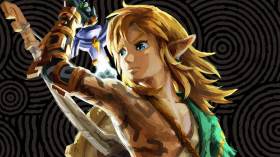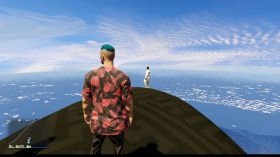Paul Anstey’s first theory was that the acceptance was an accident. When the husband and wife team from Melbourne got the call that their game had been accepted into PAX Online’s indie showcase, alongside just 19 other games from around the world, they found it hard to believe.
Dap does stand out in the indie showcase – but in a good way. Foregoing the candy-bright visuals of many of the other offerings in the 2020 showcase, this dark, dreamlike, top down horror-adventure game, features haunting sound design and an intriguing art style. The player moves through an ominous dreamworld collecting creatures called daps, which help them solve puzzles, fight enemies, and progress through the surreal narrative. The visual style is dark and lush, drawing on influences from Hyper Light Drifter, to films from Studio Ghibli, and it would look at home alongside Hollow Knight, Titan Souls, and Limbo.
Read More: Meet the Aussies of the PAX Online Indie Showcase
For the Ansteys, the project began as an excuse to learn how to make games. For artist Iris and musician Paul, game development felt like an exciting way to synthesise their practice – though it took a while to figure out how exactly to do that. After experimenting with a few engines, the pair, who had no coding experience prior to developing Dap, settled on GameMaker Studio.
While Paul had expressed initial interest in programming, Iris quickly demonstrated an aptitude for GameMaker’s coding language, GML, and quickly became the project’s lead programmer, as well as lead artist. Paul, on the other hand, put his musical and sound design skills to the test creating the haunting soundscape of the game, and designing the puzzling environments of Dap. He considers this one of the most useful lessons the process has taught him: ‘I was so keen to learn programming in the beginning, but Iris was just so much better at it, it didn’t make sense. When you’re learning how to make a game not everything is going to work for you, so be open to trying different things, and see what you gravitate towards.’
Working on this game in their spare time also allowed the project to develop in a way that responded to the present moment. The game’s central focus of a spreading infection might seem prescient now, but the game’s design was profoundly shaped by the reality of Australia & the environment long before the pandemic.
The official trailer for Dap.
Early in development, the game’s primary mechanic, where the player directs a group of daps around to solve environmental puzzles, was more heavily influenced by top-down shooters, a hangover from the GameMaker tutorials the pair undertook to familiarise themselves with the engine. However, as bushfires ravaged Australia over Black Summer, the idea of making a game with a violent focus felt less appealing.
Paul reflected: ‘when the bushfires were happening earlier in the year, I was feeling really stressed out, as everyone was. I just didn’t want to develop a violent game, or have anything to do with that kind of thing. And we had a moment of clarity, like: “what are we doing? Guns don’t even suit our game, or its world. We’ve got to take the guns out.”’ The resulting redesign drew on the pair’s reflections on the natural world, like watching the movements of bee swarms, and multiplying microorganisms.
Dap is due out for release in January 2021, and the final stages present plenty of challenges. As they finalise development, Iris says that they’re aiming for a short, highly curated experience that they can feasibly finish – one where ‘none of the cracks are showing,’ rather than something overly ambitious. Unlike the earlier stages of the game, when they could develop experimentally, and in their own time, the game’s recent spike in visibility has come with some harder deadlines. ‘Because we’re just two people, it’s very daunting,’ Iris said, ‘There’s so much work for just a tiny bit of game.’
While the Ansteys may be shocked by Dap’s acceptance into the showcase, they’re working in a fine tradition. Many of Australia’s best loved games had their start in informal game development. Worm Club’s Frog Detective: The Haunted Island, the first in the Frog Detective series, began as a third year game design project while Creative Director Grace Bruxner was finishing her degree, and House House’s Push Me Pull You, their first game before developing Untitled Goose Game, was also made in their spare time.
While informal development lacks the financial or social support of a studio, it allows developers to take big risks, and explore their practice on their own terms. This can allow them to find a creative approach that suits them, and results in work that couldn’t have come out of a 9-5 job.
I asked the pair for any advice they might give to others non-programmers who wanted to start making games, and their main advice applies across creative endeavours: ‘just jump into it,’ Paul said. ‘And when you do, don’t be afraid of the crap you’re making in the beginning. It’s the best thing you can do to get better.’ Iris added.
Find more information on Dap at Melting Parrot games’ website.





